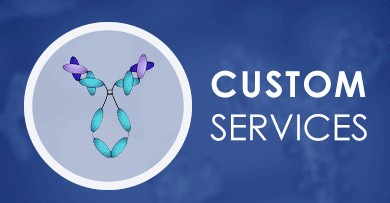 Loading...
Loading...

SLAMF1
 Loading...
Loading...Anti-SLAMF1 Products
-
- Derivation: Mouse
- Species Reactivity: Human
- Type: Mouse IgG1
- Application: FC, ICC, IP
-
- Species Reactivity: Human
- Type: Mouse antibody
- Application: ELISA, FC, ICC, IF, IHC-Fr, IP
- Recombinant Rat Anti-Slamf1 Antibody (TC15-12F12.2) (NEUT-1972CQ)
-
- Species Reactivity: Mouse
- Type: IgG2a, κ
- Application: FC, Costim, IP, BL
- Recombinant Rat Anti-SLAMF1 Antibody (9D1) (FN-176CQ)
-
- Species Reactivity: Fish, Mouse
- Type: Rat IgG1
- Application: FC, FuncS, Neut, IHC, IF
- Human Anti-SLAMF1 Recombinant Antibody (VS-0723-WK117) (VS-0723-WK117)
-
- Derivation: Chimeric (rabbit/human)
- Species Reactivity: Human
- Type: Chimeric (rabbit/human) IgG1
- Application: FC
-
- Species Reactivity: Human
- Type: Rabbit IgG
- Application: WB, IP, FC
-
- Species Reactivity: Human
- Target: SLAMF1
- Host Animal: Human
- Application: ELISA, FC, Cell-uptake
- Anti-SLAMF1 Immunohistochemistry Kit (VS-0525-XY6618)
-
- Species Reactivity: Human
- Target: SLAMF1
- Application: IHC
-
- Derivation: Phage display library screening
- Species Reactivity: Human
- Type: IgG
- Application: WB, IP
Can't find the products you're looking for? Try to filter in the left sidebar.Filter By Tag
Our customer service representatives are available 24 hours a day, from Monday to Sunday. Contact Us
For Research Use Only. Not For Clinical Use.
Background
CD markers
Membrane, Secreted (different isoforms)
Cell type enhanced (Plasma cells, T-cells, B-cells, monocytes, Melanocytes)
Immune cell enhanced (MAIT T-cell)
Cell line enriched (HDLM-2)
Interacts (via cytoplasmic domain) with SH2D1A and SH2D1B; SH2D1A mediates association with FYN; SH2D1A binds to phosphorylated and not phosphorylated ITSM 1 (PubMed:9774102, PubMed:11313386, PubMed:11806999, PubMed:12458214). Interacts (via cytoplasmic domain phosphorylated on tyrosine residues) with INPP5D and PTPN11; presence of SH2D1A facilitates binding to INPP5D (PubMed:11313386, PubMed:12458214). Interacts with MAP4K1 (PubMed:20231852). Interacts with PIK3C3, BECN1 and UVRAG; indicative for an association with PI3K complex II (PI3KC3-C2) (PubMed:20818396). (Microbial infection) Interacts with measles hemagglutinin protein.
Host cell receptor for virus entry, Receptor



